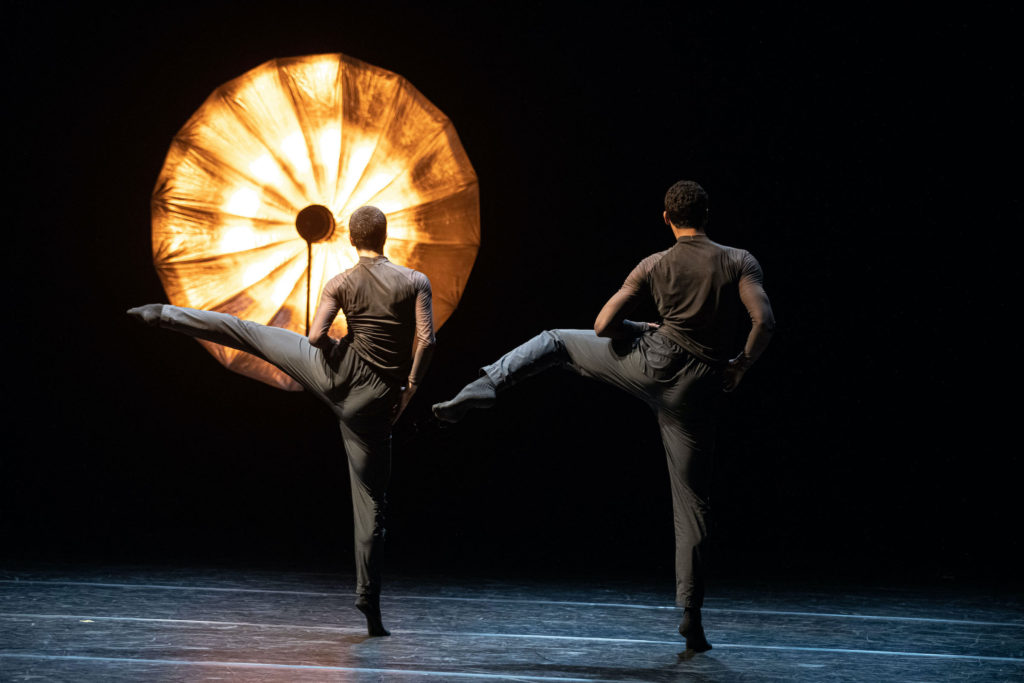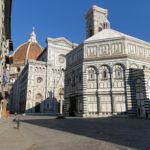Italy’s Lockdown - Vancouver Ballet Society
- Home
- City Reports 2020 - 2023
- Italy’s Lockdown

By Silvia Poletti
On February 29, 2020, when I entered the beautiful Piccinni Theatre in the port city of Bari, I did not imagine it would be the last time I would be an audience member for a long while. That evening was a feast. The theatre had opened just two months earlier after eight years of restoration work, and dance had been promptly scheduled in the opening season: Aterballetto was there with its latest triple bill — Ohad Naharin’s Secus and two creations by Philippe Kratz, a company dancer who is developing an interesting choreographic vein. However, concerns about the gravity of the coronavirus epidemic were already in the air as the Italian government announced the need for Italians to go into quarantine and cancelled international flights from China.

Aterballetto had just started rehearsing a creation meant to premiere in June at Ravenna Festival, Johan Inger’s Don Juan, a production supported by several European festivals. At the same time that we were in Bari, Aterballetto’s director Sveva Berti was busy postponing the rehearsal schedule with Inger who, living in Seville, was afraid to travel to the company’s studios in Reggio Emilia, where he might be compelled to stay in quarantine. As it turned out, everything quickly changed and plans were wiped out.
Yet in the first days of March, many of us carried on thinking that, by following strict medical rules and social distancing, life could go on much as usual. Only a few shows were cancelled; some theatres simply postponed them by a few weeks. In Rome, a new production of Le Corsaire by José Carlos Martinez for the Rome Opera ballet had just premiered, with performances planned till the second week of March. In Naples, Don Quixote at San Carlo Theatre was running, while in Milan, at la Scala, rehearsals of Mauro Bigonzetti’s new production for the company, Madina, starring Roberto Bolle, were proceeding toward the premiere date of March 22.

Instead, on March 9, a total lockdown was ordered by the government: 60 million people were in quarantine. Two weeks later, restriction of movements and closure of nonessential activities throughout Italy were mandated. It was like being trapped under a glass bell, watching the days go by in a strange suspension of time. After the first overwhelming shock marked by the tragic daily bulletins of increasing numbers of dead and infected people, the gravity of the situation for the performing arts was revealed not only in artistic terms, but above all economically.
Culture Minister Dario Franceschini did not assist artists and producers elaborate a strategy to survive this necessary stopping of all their activities, failing to help them define a road map for the coming months. “Take the virtual stage as an opportunity,” he simply declared. “I imagine a Netflix of the performing arts.” If the moment had not been so tragic for the survival of all theatrical arts in the country, the minister’s statement would be merely ridiculous: Instead, it sounds dangerously blind as many institutions fight to balance their budgets. Building a digital platform to which virtual spectators will subscribe would not be easy. The crisis of the only Italian performing arts subscription TV channel, Classica TV, reveals the difficulty.
Actually, an enormous quantity of Instagram stories and streaming shows immediately began filling the digital social platforms offering a huge — and free — occasion to be in touch with favourite dancers, to observe their daily life and take classes with them.
Meanwhile, the abyss grows larger. While in the coming weeks athletes and sport teams will be allowed to train, to date no decision has been made as to when dancers can return to the studio. The cancellation of the current theatrical season has already caused a tragic deficit in budgets (La Scala’s intendant has declared that the theatre is losing one million euros a day). Companies are relying on unemployment insurance for their contract artists; independent dancers, though with no guarantee, can receive a monthly subsidy from National Welfare. To say nothing about private dance schools all around the country, to whom the closure is an economic disaster.
Summer is around the corner, usually the liveliest season for Italian festivals and events. As no official road map has been given, amid uncertainty and confusions, rumours and conjectures, the many organizers are trying to find solutions by themselves. Some festivals — like the Venice Biennale — have already decided to postpone to October (a hopeful scenario). Ravenna Festival is considering how to hold some concerts in the open air; some others are waiting for detailed instructions from the government. For sure, due to the international companies’ cancellations and those eight weeks of quarantine, everybody knows there will not be anything happening in the coming weeks.
And after August? The coronavirus crisis has sharpened the vulnerability of the Italian performing arts system and the inadequacy of the political system. Also, it has revealed the weakness of the Italian dance world, unable to make a strong alliance to defend the rights and reasons for their art in all its aspects alongside other artistic categories, such as music and opera. Those disciplines have proved they are able to band together to get more attention and obtain clear answers to their well-defined requests.

